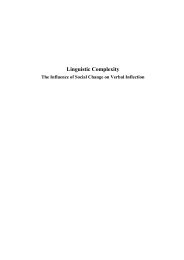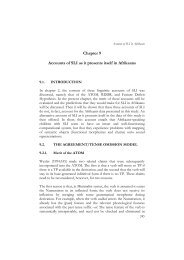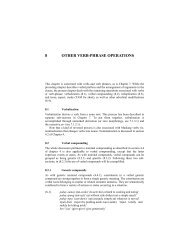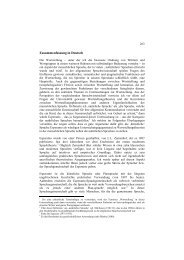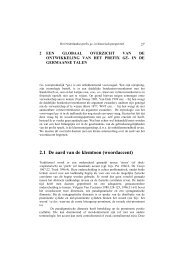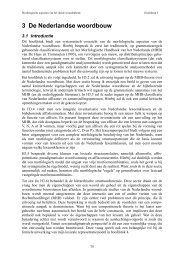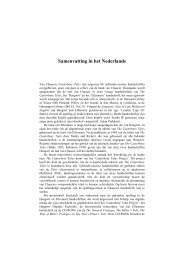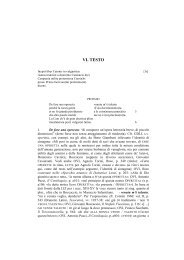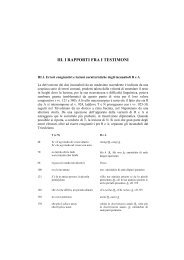chapter 2 stance adverbs qualifying a standpoint - LOT publications
chapter 2 stance adverbs qualifying a standpoint - LOT publications
chapter 2 stance adverbs qualifying a standpoint - LOT publications
You also want an ePaper? Increase the reach of your titles
YUMPU automatically turns print PDFs into web optimized ePapers that Google loves.
46<br />
CHAPTER 2<br />
them under „adjuncts‟, too, more specifically under „clause-oriented adjuncts‟.<br />
In various studies from the fields of pragmatics and semantics these words also<br />
appear as „pragmatic markers‟ (Fraser 1996), and „sentence adverbials‟ (Bartsch,<br />
1976; Koktova, 1986). Other labels include „sentence markers‟, „sentence<br />
modifiers‟ and „sentential <strong>adverbs</strong>‟. The common denominator that brings all<br />
these <strong>adverbs</strong> together is that in syntactic terms they occupy the most<br />
peripheral position in the clause and that in semantic terms they “characterize<br />
how the propositional content of the clause relates to the world or the<br />
context”, as Huddleston and Pullum (2002, p. 576) put it.<br />
As Biber et al. (1999) remark, the use of <strong>stance</strong> <strong>adverbs</strong> is much less<br />
common than the use of circum<strong>stance</strong> and linking <strong>adverbs</strong>: “In fact, most<br />
sentences in English do not contain <strong>stance</strong> <strong>adverbs</strong>. Rather they are statements<br />
made without overt <strong>stance</strong> markers” (p. 853). Of the four registers that Biber et<br />
al. have studied and from which they have drawn their examples (conversation,<br />
fiction, news, and academic discourse), <strong>stance</strong> <strong>adverbs</strong> appear more frequently<br />
in conversation. Here is how the authors explain this:<br />
Speakers use <strong>stance</strong> <strong>adverbs</strong> to convey their judgments and attitudes, to<br />
claim the factual nature of what they are saying, and to mark exactly<br />
how they mean their utterances to be understood. (1999, pp. 766-767)<br />
Stance <strong>adverbs</strong> are relatively common in academic prose, while they have the<br />
lowest frequency in news.<br />
Single word <strong>adverbs</strong> constitute the most frequent and diversified<br />
realization of <strong>stance</strong> adverbials – at least as far as the English language is<br />
concerned. 27 According to Biber et al. (1999), “prepositional phrases and finite<br />
clauses each account for about 15-20% of <strong>stance</strong> adverbials” (p. 768). Finite<br />
clauses are the second most common structural form of <strong>stance</strong> adverbials in<br />
conversation and fiction. Prepositional phrases are the second most common<br />
form in news and academic prose. Other constructions used to convey <strong>stance</strong><br />
include: nouns, modal auxiliaries and main verbs, as well as paralinguistic<br />
features such as prosody and loudness.<br />
Biber et al. (1999) distinguish three main types of <strong>stance</strong> <strong>adverbs</strong>, based on<br />
semantic and pragmatic criteria, namely: epistemic <strong>adverbs</strong>, attitude <strong>adverbs</strong><br />
and style <strong>adverbs</strong>. The first group is subdivided in sub-groups as Table 1<br />
shows. 28 Epistemic <strong>stance</strong> <strong>adverbs</strong> focus on the truth-value of the proposition<br />
commenting on factors such as certainty, reality, sources, limitations, and<br />
27 A distinction is made in the literature between the terms „adverb‟ and „adverbial‟. „Adverb‟<br />
refers to the part of speech that modifies a verb, adjective or another adverb. „Adverbial‟ refers to<br />
words, phrases or clauses that function as <strong>adverbs</strong>. In this study, I focus on single word <strong>stance</strong><br />
<strong>adverbs</strong> and use the term „<strong>stance</strong> <strong>adverbs</strong>‟ throughout.<br />
28 Table 1 includes a selection of the <strong>stance</strong> adverbials that appear in Biber et al‟s (1999) relevant<br />
<strong>chapter</strong> as well as in the examples and in the indicative lists of <strong>stance</strong> adverbials provided in other<br />
sections of the grammar.



